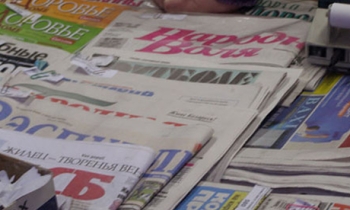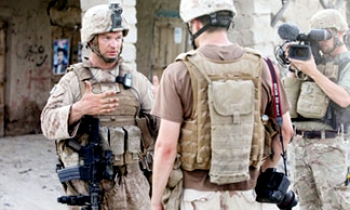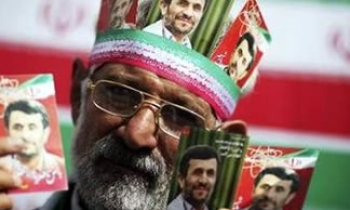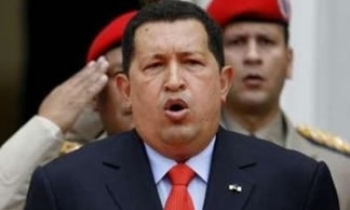An international press freedom panel has found a serious deterioration in the security situation for the Sri Lankan media with threats, abductions and attacks committed by all parties to the conflict, and particularly paramilitary and militia groups.

Nine media practitioners have been killed since August 2005 and there have been numerous death threats and incidents of harassment, including violent attempts to stop the distribution of newspapers, said a report issued Wednesday by the International Press Freedom and Freedom of Expression Mission to Sri Lanka.
Even in cases where evidence exists of the identity of the alleged killers, the relevant authorities had apparently taken little or no action, the mission regretted. Those supporting a negotiated settlement are often labelled as “traitors” and supporters of one or the other combatant parties and there appears to be a widespread acceptance of the use of threatening language to intimidate or endanger individuals. As a consequence, many media practitioners are in hiding, some for up to six months, while in other cases threats have been made to the families of media practitioners, the report said.
The five organisations participating on the mission and the authors of the report were the International Federation of Journalists, International Media Support, International Press Institute, International News Safety Institute, and United Nations Educational, Scientific and Cultural Organization. The objectives of the mission were to assess the current media situation and the impact of the escalation in fighting between the Sri Lankan Government and the Liberation Tigers of Tamil Eelam (LTTE) on the media.
According to rights activists who the mission met, 2006 has been the worst year in living memory for the population of the country, with thousands of displaced people, refugees, disappearances, deaths and high profile killings. The mission found that attacks against media practitioners, especially among the Tamil press, have not abated with nine persons killed in the past year and a half. In this context, death threats and other forms of harassment against the media in general, including the beating of newspaper delivery personnel, have had chilling effects through intimidating the Sri Lanka media.
The mission found extreme differences in experiences of the Sinhala, English and Tamil language media. While members of the English and Sinhala language media spoke of intimidation and threats from LTTE, as well as pressure to conform to the government’s views (in particular with the introduction of the anti-terrorism regulations that have resulted in self-censorship among even the most senior English and Sinhala language media), it appeared that they functioned within a comparatively less constricted and dangerous environment than the Tamil language media, which often faced more severe difficulties.

The mission found that censorship exists, although it is applied largely through indirect means. Those refusing to toe the government’s line may be labelled as spies or traitors. The willingness of politicians and others to denounce the media reinforces self-censorship and makes the free expression of opinion a life threatening activity.
In August 2006, President Mahinda Rajapaksa reportedly told editors that the military were keen to censor the media and a letter sent by the Ministry of Defence to media institutions on September 20, requesting that “news gathered should be subjected to clarification and confirmation”, has been viewed as an attempt to impose censorship.
The closing down of satellite television services as a result of the government's actions has hindered public access to foreign news programmes. The selective banning of films and television dramas, obstruction of films being shown abroad, and interference in certification processes is of serious concern for freedom of expression, the press mission asserted.
- Darmaratnam Sivaram: On 29 April, 2005, Darmaratnam Sivaram’s body was discovered near the Sri Lankan parliamentary complex in a high security zone in Colombo. An unidentified gang abducted Sivaram from outside a restaurant the previous day at 10:30pm. The high security zone where Sivaram’s body was found is tightly patrolled by Sri Lankan government security forces, leading local groups to blame the government for his murder. Darmaratnam Sivaram, also known as ‘Taraki’, was a political columnist with the English language newspaper, the Daily Mirror and member of editorial board of tamilnet.com, and was an outspoken critic of the Sri Lankan government.
- Relangi Selvarajah: On August 12, 2005, Relangi Selvarajah and her husband were shot dead by unknown gunmen at around 1pm in Bambalapitiya, Colombo. Selvarajah had previously worked as a TV presenter with Sri Lanka Rupavahini Cooperation (SLRC) and was working as a journalist with Sri Lanka Broadcasting Cooperation (SLBC).
- Subramaniyam Sugirdharajan: On January 24, 2006, Sugirdharajan, a Trincomalee port employee as well as a journalist, was shot dead as he waited for a bus to go to work in the morning. He had published photographs and news reports critical of the army and of paramilitary groups active in Trincomalee, in the newspaper Sudaroli Oli. His photographs of five students killed in Trincomalee helped contest the original reports that they had been killed by grenades.
- Suresh Kumar & Ranjith Kumar: On May 3, 2006, as journalists gathered in Colombo to celebrate Press Freedom Day, a group of unidentified men attacked the office of the Uthayan newspaper in the northern city of Jaffna. Suresh Kumar, the Marketing Manager and Ranjith Kumar, working in the circulation department, were killed. Five others were injured and the office damaged. The police took six persons into custody but allowed bail. Sources in Jaffna have alleged that these persons were not involved at all.
- Lakmal de Silva: On July 2, 2006, freelance journalist Sampath Lakmal de Silva was shot dead by an unknown group. He was abducted at 5:00 a.m. (local time) from his parents' home in Borallasgamuwa, south of Colombo. He was found shot dead three kilometres from his home. His mother said he went out to meet some military operatives, known to him for some time.
- Mariathas Manojanraj: On August 1, 2006, newspaper vendor Mariathas Manojanraj was killed by a mine that was set off as he was going to Jaffna to collect newspapers for distribution. The attack came as death threats are being made against the distributors of Tamil-language newspapers.
- Sathasivam Baskaran: On August 16, 2006, a driver-cum- distributor of the Jaffna based Uthayan newspaper was shot dead. Sathasivam Baskaran, 44, was gunned down in his Uthayan delivery vehicle after taking advantage of the temporary lifting of an army curfew to deliver copies of the newspaper. He was shot while driving his clearly-marked vehicle in an area controlled by the Sri Lankan armed forces. According to the Tamilnet website, he was killed by soldiers.
- Sinnathamby Sivamaharajah: On August 21, 2006, Sinnathamby Sivamaharajah, managing director of the Jaffna based Tamil-language Namathu Eelanadu newspaper, was shot dead in Vellippalai. Police are investigating the murder, according to news reports. The motive for the killing is unclear. Subsequent to the murder newspaper Namathu Eelanadu publication was closed.









